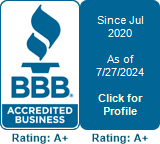Best Practices When Buying a Dental Practice
Buyers are increasingly seeking help from practice brokers when buying a dental practice. Many of these prospective buyers are recent graduates who are paying back high student loans. They realize the importance of making the right choice, and seeking help from consultants who focus exclusively on dentistry and can analyze a purchasing opportunity rationally.
What the buyer needs to do
- Decide where you and your family want to live.
- Identify the type of practice you are seeking (location, patient mix, revenue sources, etc.).
- Have a professional valuation performed by your rep-resentative.
- Create conservative cash fl ow projections to ensure fi nancial success and analyze the return on investment and profi tability.
- Obtain funding that fully addresses your purchase price and working capital needs with terms that fi t the cash fl ow analysis.
- Analyze the retention potential of the patients.
- Create a business, marketing, and growth plan for the practice.
- Find out if the staff will remain after the purchase.
- Assess your ability to provide the procedures or ser-vices that the practice provides.
- Choose an accountant who specializes in dentistry to set up the proper allocation of the purchase price to ensure the best possible tax consequences and put your accounting systems in place.
- Clarify exactly how the seller will assist in the patient transition.
What can go wrong
- Seller valuation can be inaccurate and cause an in-fl ated selling price.
- Closing costs and working capital needs may not be included in the funding, causing cash fl ow problems in the beginning.
- Choosing a practice with a high level cosmetic focus and being unprepared to provide these services.
- Not having an accurate cash-low projection to ensure fi nancial success.
- The seller remaining in the practice too long after the sale, making it hard to transfer patients to the new buyer.
- Not having the proper restrictive covenant for the seller to prevent his or her return to compete with the buyer.
Example of a buyer making a good choice
Eight years ago, after exploring the purchase of several practices, Dr. S purchased a practice with revenue of $500,000. A consulting fi rm was hired to evaluate the op-portunity and ensure the cash-fl ow potential. Dr. S then engaged an accounting fi rm that specialized in dental clients, which has represented the practice since its incep-tion. With excellent planning during the past eight years, the practice has grown to $1.1 million in gross revenue and a 47 percent profit.
Dr. S merged with an additional small practice three years ago, which has helped the practice grow signifi -cantly. This is a solo-owned practice with one dentist and two hygienists. Most recently, Dr. S moved into a new space that will allow the practice to grow and add an heir-apparent associate candidate in the future.
Purchasing a practice is both exciting and scary. The decision you make to purchase your practice will infl u-ence your professional and personal life for decades. Your decision will either start you on the path to suc-cess or on a tough road fi lled with disappointment and struggle.
The average purchase price of a dental practice is $350,000 to $450,000. With working capital added to this amount, the buyer is making a major investment. Practice ownership and its associated responsibilities are a challenge for every new buyer. Success and peace of mind are not easy to attain. But when you follow some basic concepts relative to planning your purchase, you will look back over your successful career with pride and satisfaction as both a clinician and a businessperson.
Take the time to plan the purchase of your practice so the choices you make will be good ones.
John F. McDonnell is the founder of The McNor Group, a dental brokerage, appraisal, accounting, financial-planning, and practice-management firm. He is a member of American Dental Sales and can be reached at (888) 273-1014, mcnor@mcnorgroup.com, or by writing to 1301 York Road, Suite 800, Lutherville, MD 21093.
This article was originally published in the December 2004 issue of Dental Economics.
